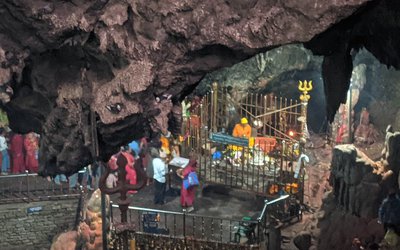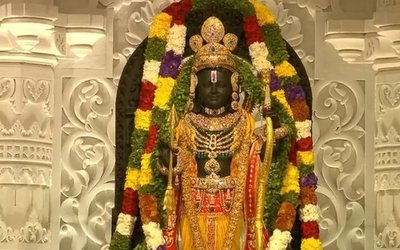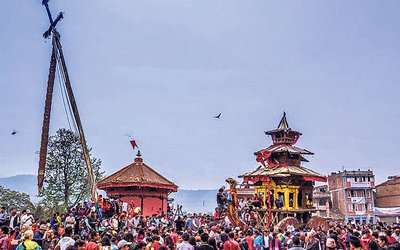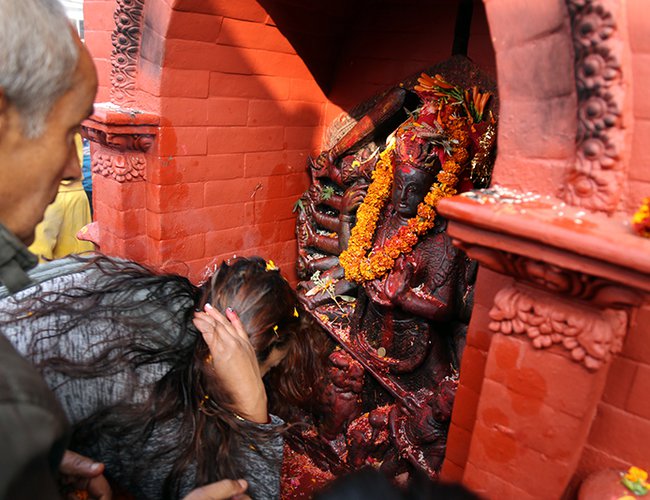
Hindu communities today across the country are observing Shree Panchami, also known as Basanta Panchami, by worshiping the Hindu goddess Saraswati, the deity of learning, wisdom, knowledge and arts.
Parents and guardians start teaching alphabets to their children today with the belief that it is an auspicious day. Devotees and students thronged various Saraswati temples across the country since early morning to perform puja and make wishes.
A religious fair is held at all Sarasvoti shrines but a great festival is held at three main shrines in the Kathmandu Valley. They are Svoyambhu Sarasvoti/Manju Shree, Lele Sarasvoti in Lalitpur, and Nil Sarasvoti at Lazimpat, Kathmandu.
On this day, in the morning, the head of state, prime minister, ministers and other high-ranking government officials participate in the celebration of ‘Basantasrawon’ literally meaning listening to the announcement of the advent of the spring season at the courtyard called Nashalchowk at the ancient palace complex in Kathmandu. That is why Shree Panchami is also known as ‘BasantaPanchami’.
On this occasion, priests perform worship to the Goddess of Learning, and to the spring season. A musical band plays an auspicious tune in praise of the season. After the rituals, priests announce the commencement of the spring season. Thereafter, they offer the season’s blessing to the head of state, prime minister, ministers and other participants.
Similarly, Basanta Panchami or Shree Panchami is the most auspicious day for businessmen, craftsmen and artisans. They wait for this day to begin a new start-up business believing the day ensures them a success. Traditionally, parents teach the first alphabet to their children on this day.
This is the most auspicious day of a year. So, Nepalis perform such auspicious ceremonies as wedding, adulthood ceremony to their sons, and mock marriage to their daughters. The whole day is so auspicious Nepalis could perform any social or religious rituals at any time of this day.
Colorful Day
Nepalese life is colorful because of the Hindu and Buddhist festivals and festivities which are dedicated to one deity or another or and sometimes to one natural phenomenon or another.
Shree Panchami, ManjuPanchami or BasantaPanchami is one such day, which marks the advent of spring season. Hindus celebrate it as the day of arrival of Goddess Sarasvoti, Buddhists as the day of Lord Manju Shree the God of Knowledge and Craftsmanship. Each name has its own meaning and significance for Nepalis. All these different names for one auspicious day celebrated by the Nepalese people of different faiths suggest the religious harmony in Nepal.
Thus, the first day of the spring is the special day for the Nepalis when the Goddess of Learning and the God of Knowledge and Craftsmanship step in. Thus, BasantaPanchami or Shree Panchami is not only the harbinger of spring but also it is at one time the harbinger of the Nepalese civilization.
Hinduism is a way of life rather than a religion. The people practicing Hinduism have firm faith on Gods and Goddesses whom they worshiped on various occasions by performing Puja and rituals. VasantPanchami is a festival that worships GoddessSaraswati as well as it signifies the beginning of VasantRitu (spring season).
MaghSud 5 (5th day of the bright fortnight of the lunar month of Magh – falls usually in the month of January or February) is the day of VasantPanchami and is also celebrated as Shree Panchami or Saraswati Puja in West Bengal and few other parts of Orissa.
On this day Goddess Saraswati is worshipped in various names and fames - the Goddess of Learning, the deity of Gayatri, the fountain of fine arts and science, and the symbol of supreme vedantic knowledge.
The image of Goddess Saraswati depicts her sitting on a vehicle that symbolizes her supreme power. The white swan of Saraswati symbolizes SatwaGuna (purity and discrimination), the lotus of Lakshmi the Rajas Guna and the tiger of Durga the Tamas Guna. Saraswati is shown possessing four hands and plays "Veena", an Indian string musical instrument.
VasantPanchami or Saraswati Puja is celebrated with great enthusiasm and Hindu temples and households are full of activity on this day. This is also a special day for school children as they observe it with great reverence.
The festival is considered the best day for starting a new venture and making commitment to good causes.
Goddess Saraswati is worshiped with various names such as Bharati, Sharada, Jagatmata, Bageshwari, Kaumari, Baradayani and Kamdhenu.
Shree Panchami is the day of triple religious importance. Nepalis celebrate Shree Panchami on the fifth day of the bright fortnight in the month called Magha (Jan-Feb.) in the Nepali calendar.
On this day, Hindus perform worship to the Goddess of Learning called Sarasvoti; Buddhists make offerings to Lord Manju Shree the God of Knowledge and Craftsmanship; Nepalese priests perform special rites to welcome the spring season, and announce the commencement of spring at Nashalchowk, Kathmandu.
Shree Panchami or ManjuPanchami and Basanta Panchami are the two or three names for one occasion on one day. Shree Panchami means the day of Goddess of Learning called Sarasvoti for Hindus and the day of God of knowledge and Craftsmanship called Lord Manju Shree for all Nepalis.
Hindus celebrate Shree Panchami welcoming the Goddess Sarasvoti. According to Kathmandu Valley’s tradition, people believe that Goddess Sarasvoti comes to Nepal from Lhasa on the eve of the Shree Panchami. So, men women, and children visit different shrines to Sarasvoti on that night; they give her a relaxing massage with mustard-seed oil. The next day, Nepalis visit Sarasvoti shrines at various places in the Kathmandu Valley to worship her and receive blessing from her.
Goddess Saraswoti is a four-armed female deity riding on a white swan. Her first right hand and the first left hand hold a musical instrument called vina, the second right hand holds a book, and the second left hand holds a chain of prayer beads. She is the supreme authority of art, music, literacy and numeration. She also is one of the female forms of the preserver of the Hindu world. She is called Goddess Mahalaxmi the combined form of the Goddess of Wealth called Laxmi and the Goddess of Learning called Sarasvoti. According to the Hindu mythology, Goddess Laxmi and Goddess Sarasvoti are the two spouses of Lord Vishnu, who together with Lord Shiva and Lord Brahma is called the Hindu trinity.
According to a tradition in Kathmandu valley, Goddess Sarasvoti comes to Nepal from Lhasa on the eve of Shree Panchami. There is a shrine to Goddess Sarasvoti in the northeastern part of Bhaktapur about 20 km to the east of Kathmandu, where Goddess Sarasvoti is supposed to be residing over there before coming to Kathmandu. So, devotees visit that shrine in the Magha (Jan-Feb.) month until the day she travels to Nepal on the fifth day of the bright fortnight of Magha. On the night she reaches Nepal, men, women, and children devotees visit Sarasvoti shrine to give her a relaxing massage with mustard oil. Next day, they visit her to make offerings and receive blessings from her.
Manju Panchami
Nepalese Buddhists celebrate Shree Panchami calling it Manju Panchami and giving worship to Lord Manju Shree believing that he drained the water from the lake to make the Kathmandu Valley livable place for humans. According to the Vajrayan mythology, Lord Manju Shree came from Lhasa to pay homage to Lord Swoyambhu: self-appearing Buddha when the Kathmandu Valley was still a lake.
When Lord Manju Shree reached the top of the Maha-mandap-giri, current-day Nagarkot, he saw the beautiful landscape of the Kathmandu Valley. Lord Manju Shree, fascinated by the beauty of the valley thought that, if the water could be released from the lake, the valley would be a beautiful place to live in. Lord Manju Shree went to the current-day area called Chovar and with the divine power he possessed, made an opening with his sword through Chovar thereby releasing water from the lake.
At that time, the Kathmandu Valley Lake was a domain of serpent gods called Nagas. Serpent King called Karkot Naga ruled over it. The Naga king finding no safe haven for him and for his subjects after the water flowed out of the lake pleaded with Lord Manju Shree for the return of the lake. Lord Manju Shree being compassionate to Nagas, preserved a small lake called Tau-da-ha to the south of Kathmandu as a residence for the Nagas, where even today the Naga king dwells with his subjects.
After draining the water, Lord Manju Shree built a city-state called Manjupatan. He crowned his pupil called Dharmakar, the ruler of the Manjupatan. Thereafter, he taught the people different crafts, arts, music and dances to make Manjupatan a prosperous city-state. Thus, the original dwellers of Kathmandu Valley were the students of Lord Manju Shree. Therefore, Nepalese people believe that the valley has inherited so much of different culture.
Manjupatan is widely described in the ancient chronicles. Some people believe that the current-day Majipat was Manjupatan. There is a shrine to Lord Manju Shree at Majipat. Others believe that the current-day Deupatan was Manjupatan, and Lord Bageswore is the Lord Manju Shree.
Lord Manju Shree and Goddess Sarasvoti is the one and the same deity but called by different names by Buddhists and Hindus. Thus, this deity symbolizes the coexistence of Buddhism and Hinduism in Nepal. For Nepalese Buddhists, Goddess Sarasvoti is Lord Manju Shree.
This belief is substantiated by the idol of Goddess Sarasvoti near the Buddhist shrine at Chabahil, Kathmandu. In this idol, one of her hands holds ‘Khadaga’ a symbol of power by which Lord Manju Shree made an opening at Chovar to release the waters from the Kathmandu Valley Lake. There are a few Sarasvoti idols, which hold a sword in one of the four hands representing Lord Manju Shree. Both Hindus and Buddhists visit the same shrine behind the Swoyambu where Buddhists worship the God as Lord Manju Shree, Hindus as Goddess Sarasvoti.
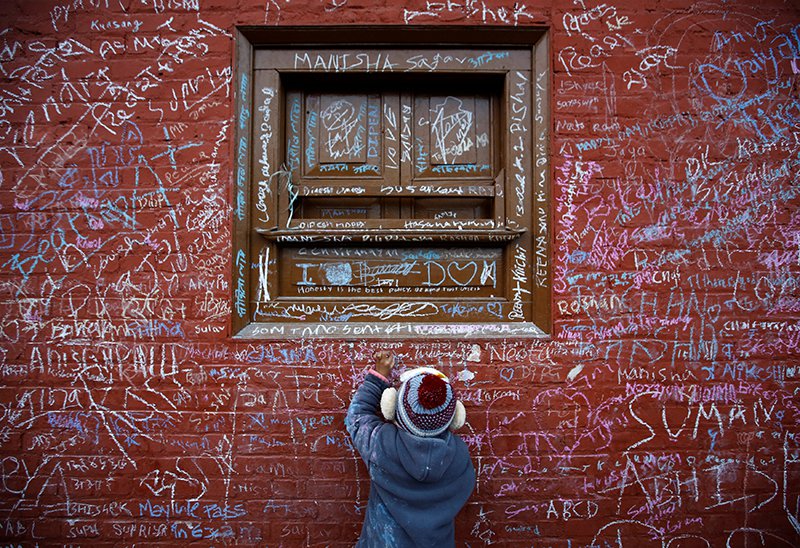
- Qatar And Nepal Ink Several MoUs, Returned Home Completing Two Days Visit
- Apr 24, 2024
- Russia Industrialists Met Prime Minister Dahal
- Apr 24, 2024
- President Paudel Hosts Banquet In Honour Of Visiting Qatari Emir
- Apr 24, 2024
- Weather Forecast: Thunder Showers Is Likely At Few Places Of Koshi, Karnali And Sudur Pashchim
- Apr 24, 2024
- Japan Hands Over The Community Center For Disaster Prevention
- Apr 23, 2024


